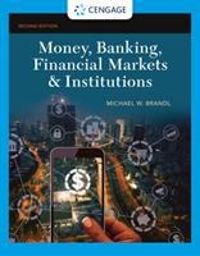Answered step by step
Verified Expert Solution
Question
1 Approved Answer
Problem 3 : Asset pricing There are two possible future states, boom and recession. They occur with probability 0 . 5 each. Let c t
Problem : Asset pricing
There are two possible future states, boom and recession. They occur with probability
each. Let and denote an investor's consumption in period's and Assume that:
A An investor with utility and a coefficient of relative risk aversion and
discount factor buys a riskless asset. What is the riskfree rate of return?
B A risky asset pays out $ in the boom and $ in the recession. How much would
the investor pay for it What is its risk premium? Hint: remember that the risky
return on an asset satisfies where is the risky payout and is the price.
Use Slide or Lecture Remember you can move variables that are certain
through expectations. What variable is known by an investor when she buys an asset?
Step by Step Solution
There are 3 Steps involved in it
Step: 1

Get Instant Access to Expert-Tailored Solutions
See step-by-step solutions with expert insights and AI powered tools for academic success
Step: 2

Step: 3

Ace Your Homework with AI
Get the answers you need in no time with our AI-driven, step-by-step assistance
Get Started


